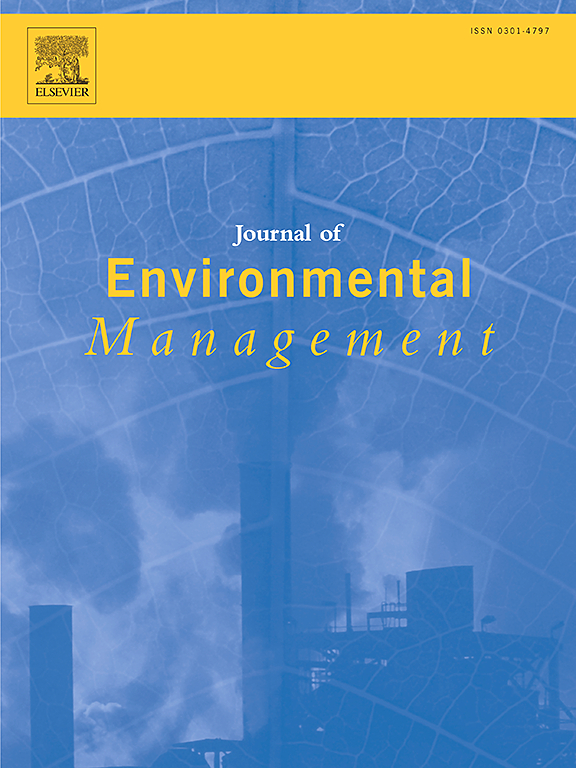Restoration from grazing on the Tibetan plateau: Pathway-specific soil MAOC sequestration in meadow and peat wetlands
IF 8
2区 环境科学与生态学
Q1 ENVIRONMENTAL SCIENCES
引用次数: 0
Abstract
Mineral-associated organic matter (MAOM) constitutes a significant portion of carbon (C) pools in wetlands, determining their role as C sinks or sources. Nevertheless, detailed knowledge of the response of MAOM formation pathways to wetland restoration is lacking. Here, we collected 0–20 cm soil samples from two typical wetlands (meadow and peat wetlands) subjected to both grazing and restoration treatments (through micro dam construction) in the Zoige area. Lignin phenols and amino sugars within the MAOM fraction were analysed to clarify the MAOM formation pathways and their potential contributions to MAOM formation. The results demonstrated that both meadow and peat wetland restoration enhanced MAOM sequestration. Compared to grazed sites, restored meadow wetlands significantly increased the mineral-associated organic carbon (MAOC) content in soils but not the C content of the MAOM fraction; restored peat wetlands increased the C content of the MAOM fraction by 58% but not the MAOC content in soils. Notably, plant-derived C and microbial necromass C strongly and dominantly influenced the C content of the MAOM fraction in the meadow (path coefficient = 0.73) and peat wetlands (path coefficient = 0.75), respectively. Compared with those in the grazed peat wetlands, the MAOM fraction in restored peat wetlands contained 1.93, 1.61, and 2.09 times higher total, bacterial, and fungal necromass C contents, respectively. Moreover, soil properties influence lignin phenols and necromass C in conjunction with the C content of the MAOM fraction rather than directly. It seems reasonable to assume that meadow wetland restoration from grazing enhanced MAOM formation in soils via the accumulation of lignin phenols (through the “direct sorption” pathway). Peat wetland restoration from grazing enhanced MAOM formation in soils via the accumulation of lignin phenols (through the “direct sorption” pathway) and the “microbial turnover” pathway.

青藏高原放牧恢复:草甸和泥炭湿地中特定途径的土壤 MAOC 固碳。
与矿物相关的有机物(MAOM)在湿地碳(C)池中占很大比例,决定了湿地作为碳汇或碳源的作用。然而,目前还缺乏关于MAOM形成途径对湿地恢复的响应的详细知识。在此,我们采集了佐伊格地区两种典型湿地(草甸湿地和泥炭湿地)的 0-20 厘米土壤样本,这两种湿地都经过放牧和恢复处理(通过修建微坝)。分析了MAOM部分中的木质素酚和氨基糖,以明确MAOM的形成途径及其对MAOM形成的潜在贡献。结果表明,草甸和泥炭湿地的恢复都增强了 MAOM 的固碳作用。与放牧地相比,恢复后的草甸湿地显著增加了土壤中与矿物相关的有机碳(MAOC)含量,但没有增加MAOM部分的碳含量;恢复后的泥炭湿地使MAOM部分的碳含量增加了58%,但没有增加土壤中的MAOC含量。值得注意的是,在草甸(路径系数 = 0.73)和泥炭湿地(路径系数 = 0.75)中,植物源 C 和微生物坏死物质 C 分别对 MAOM 部分的 C 含量产生了强烈和显著的影响。与放牧泥炭湿地相比,恢复泥炭湿地的 MAOM 部分的总 C、细菌和真菌坏质 C 含量分别高出 1.93、1.61 和 2.09 倍。此外,土壤特性与 MAOM 部分的 C 含量一起影响木质素酚和坏死物质 C,而不是直接影响。因此,我们有理由认为,放牧造成的草甸湿地恢复通过木质素酚的积累(通过 "直接吸附 "途径)促进了土壤中 MAOM 的形成。因放牧而恢复的泥炭湿地通过木质素酚的积累(通过 "直接吸附 "途径)和 "微生物周转 "途径促进了土壤中 MAOM 的形成。
本文章由计算机程序翻译,如有差异,请以英文原文为准。
求助全文
约1分钟内获得全文
求助全文
来源期刊

Journal of Environmental Management
环境科学-环境科学
CiteScore
13.70
自引率
5.70%
发文量
2477
审稿时长
84 days
期刊介绍:
The Journal of Environmental Management is a journal for the publication of peer reviewed, original research for all aspects of management and the managed use of the environment, both natural and man-made.Critical review articles are also welcome; submission of these is strongly encouraged.
 求助内容:
求助内容: 应助结果提醒方式:
应助结果提醒方式:


